
From the Archives: Building of Expo '74
Take a look back at the building of Expo '74. In 1972 plans were made to demolish the aging depot and remove the rails to make way for Expo '74. But they saved the elegant tower, which stands 155 feet tall and has a hand-wound four-sided clock. Burlington Northern donated the land and the tower, which, according to a brass plaque on its side, “stands as a monument to the railroad industry and its role in the development of Spokane and the Pacific Northwest.”
Section:Picture story
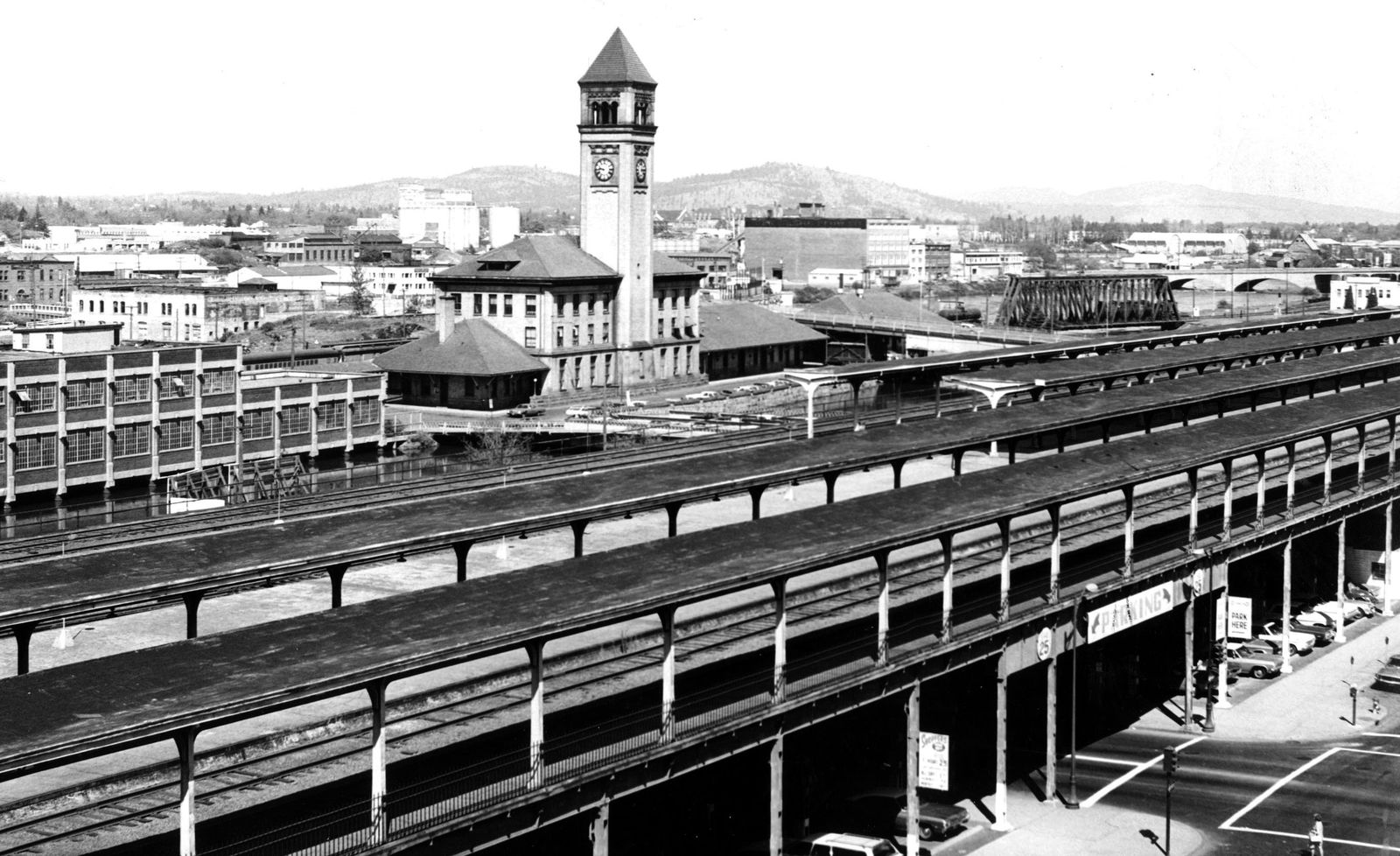
1971 photo of the area along Spokane Falls Boulevard that is now Riverfront Park. The area contained rail tracks and warehouses before it was transformed for Expo 74, and then into Riverfront Park.
Photo Archive The Spokesman-Review
Expo ‘74 Construction. Nov. 7, 1972.
Photo Archive The Spokesman-Review
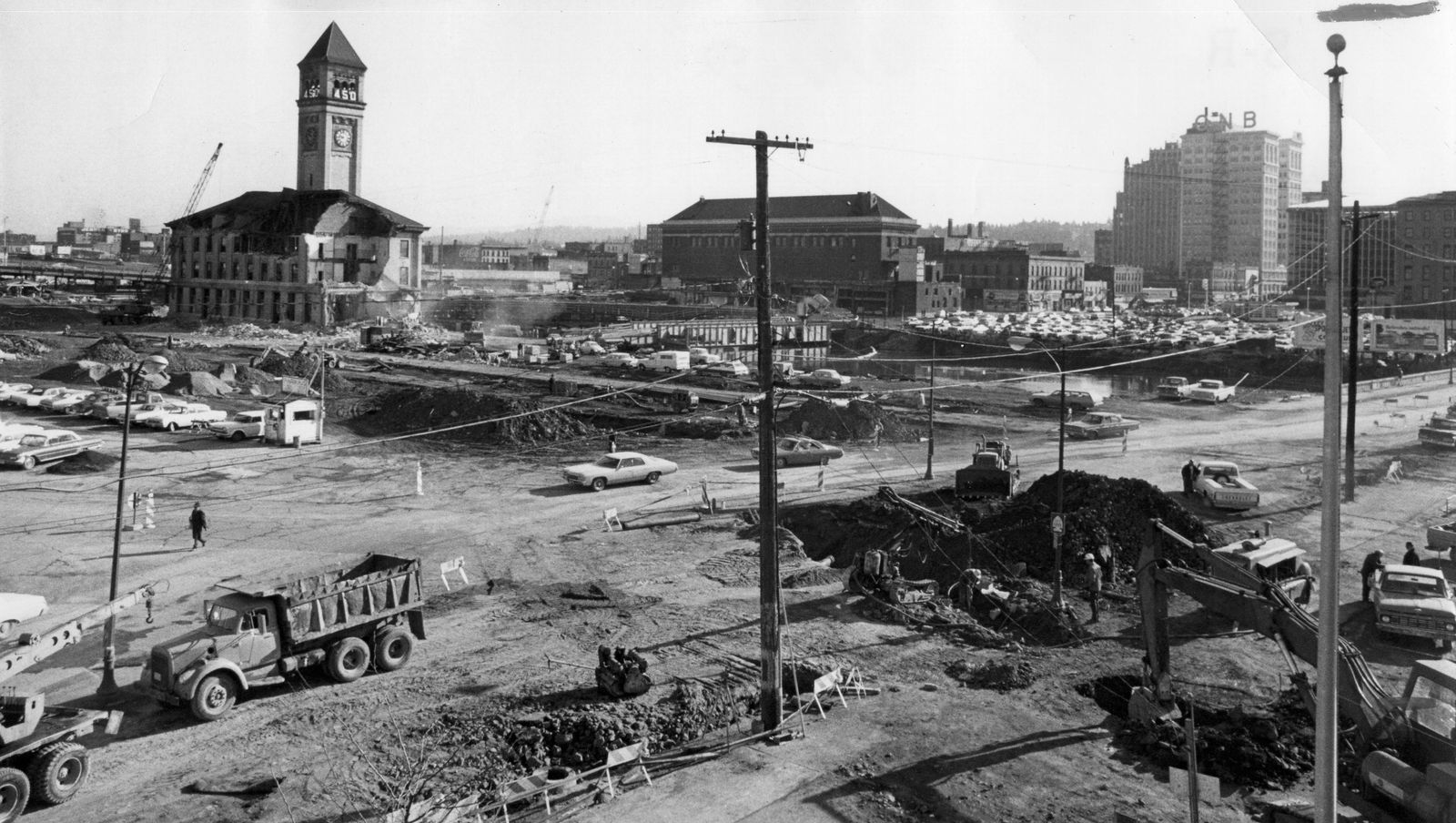
Expo 74’ construction.
Photo Archive The Spokesman-Review
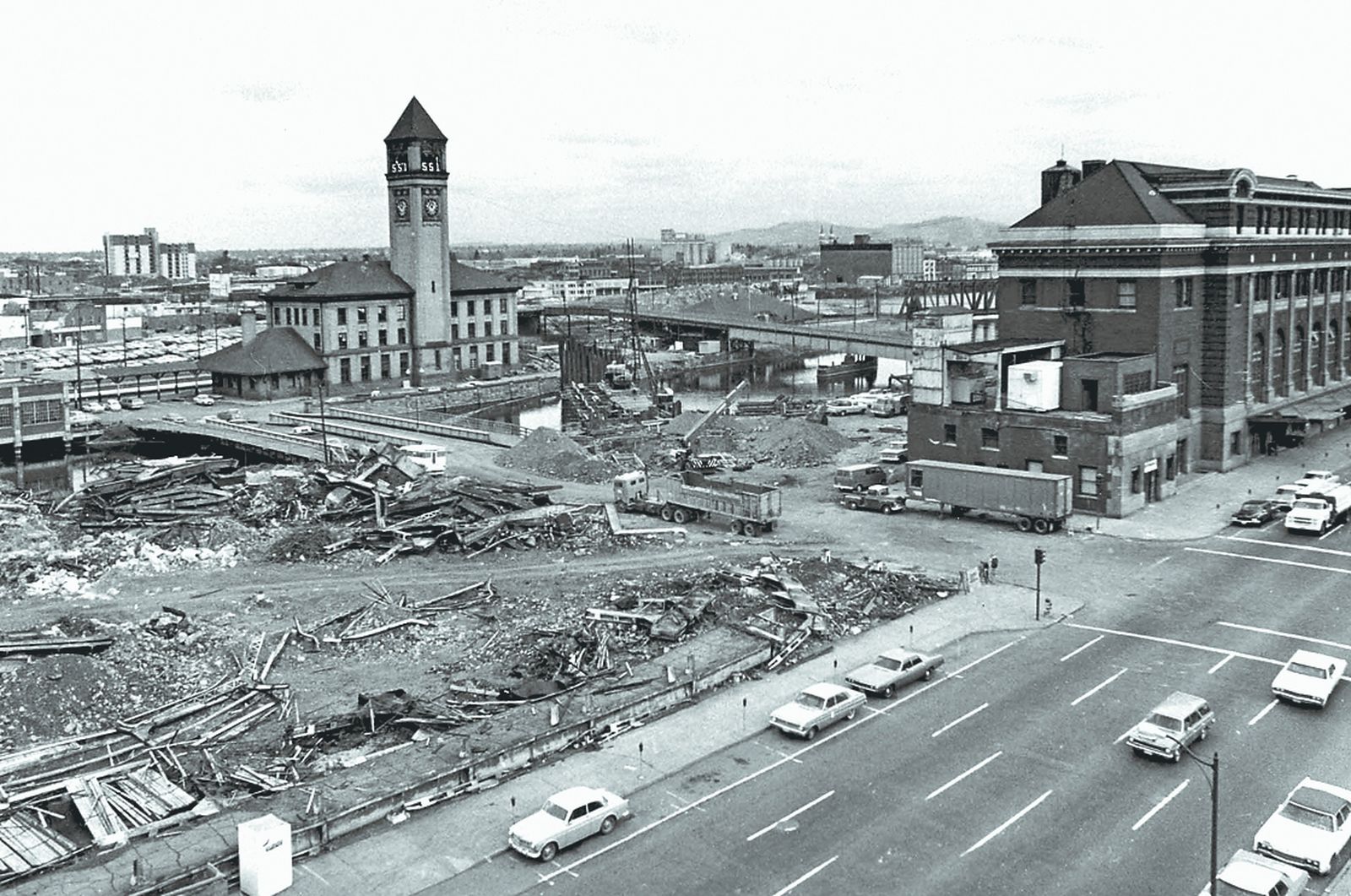
October 1972 As the preparation for Expo 74 got into high gear the area facing Trent Ave, now Spokane Falls Blvd, the buildings situated on what is now Riverfront Park were ready for the wrecking ball. In this photo the Great Northern railroad station was still standing, as was Union Station at right.
Photo Archive The Spokesman-Review
Expo ‘74 Construction.
Photo Archive The Spokesman-Review
Expo ‘74 Construction. Nov. 21, 1972.
Photo Archive The Spokesman-Review
Expo ‘74 Construction.
Photo Archive The Spokesman-Review
Expo ‘74 Construction.
Photo Archive The Spokesman-Review
Expo ‘74 Construction.
Photo Archive The Spokesman-Review
Cleared of railroad yards and related industrial structures by 1973, the Expo ‘74 site still had a long way to go before the opening of the World’s Fair. Construction had just started on the Washington State Pavilion at lower right. The old Burlington Northern Tower, center, is one of the few structures to survive the transformation of the site for a world’s fair and eventually a downtown river front park.
Photo Archive The Spokesman-Review
Ironworker balances between truss which is part of IMAX screen in the US Pavilion.
Photo Archive The Spokesman-Review
The transformation of Trent Avenue into what Mayor David H. Rodgers says will be Spokane’s “Michigan Avenue” continues, as this eastward view from City Hall shows. Max J. Kuney Co. is performing the work under a $499,815 contract. The reconstruction project includes introduction of slight curves. May 15, 1973.
Photo Archive The Spokesman-Review
With the demolition work for Expo ‘74 well along, the landscape of downtown Spokane is an ever-changing one nowadays. For the moment, the Great Northern Station tower looks a bit bereft. Mar. 19, 1973.
Photo Archive The Spokesman-Review
European Pavilion construction.
Photo Archive The Spokesman-Review
South Korea Pavilion construction.
Photo Archive The Spokesman-Review
Expo ‘74 Construction.
Photo Archive The Spokesman-Review
The two semi-circular base buildings of the U. S. pavillion at the Expo ‘74 world’s fair near completion. A vinyl canopy will rise 150 feet on a steel center pole from these bases. The U. S. exhibit will describe enviornmental problems and what is being done to solve them.
Photo Archive The Spokesman-Review
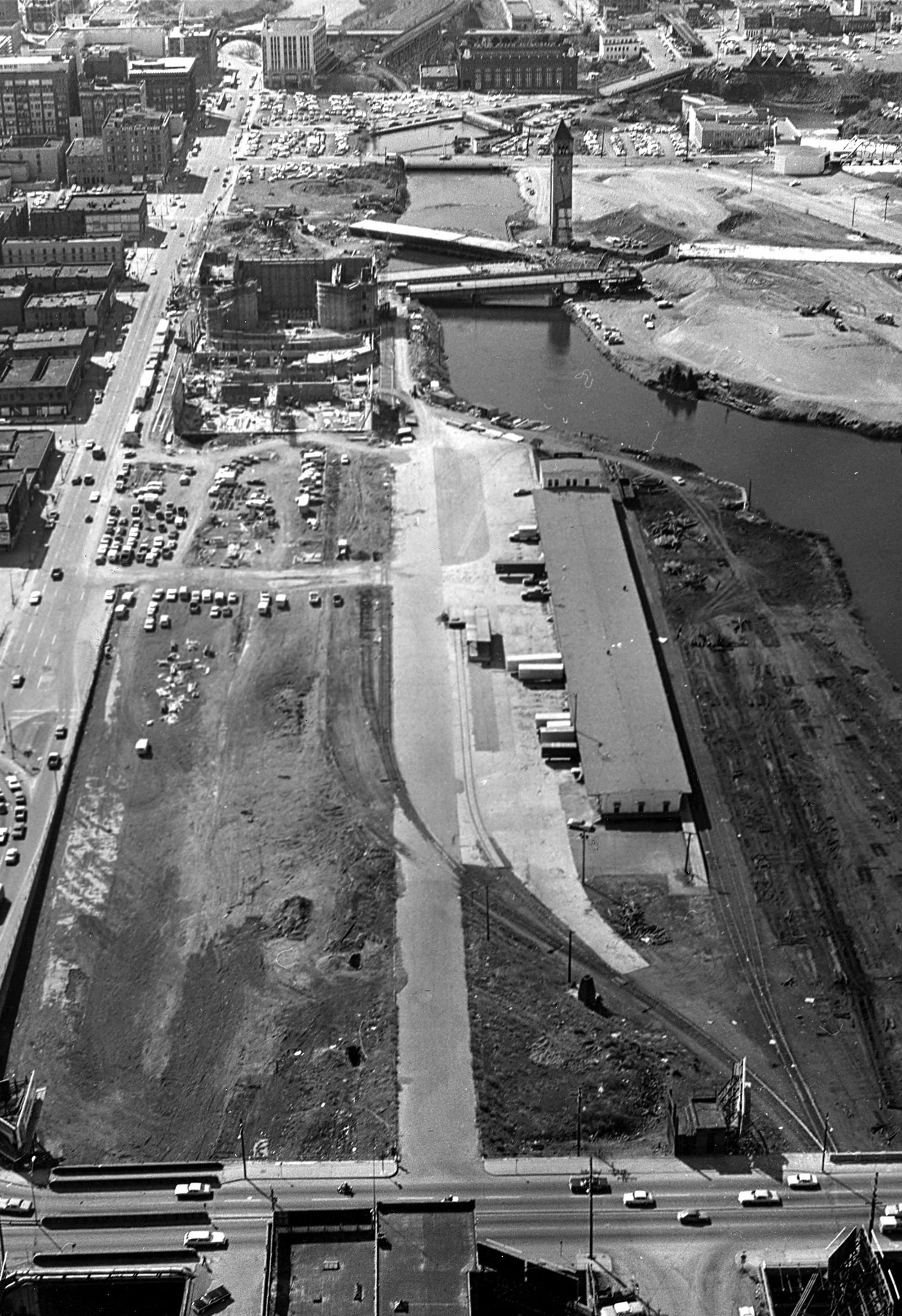
The southeast corner of the Expo ‘74 grounds, shown in the foreground of the photo above, will be the site of a $3.5 million amusement center for the world’s fair. At left is Trent Avenue, which runs east and west along the southern boarder of the Expo site. At the bottom is Division Street, the eastern border of the Expo site. The amusement center will be L-shaped, running from Trent along Division, then westward along the river. The photo, taken in April, also shows work on the state pavilion. Much of Havermale Island was undeveloped at that time; now it is full of exhibit buildings. Sep. 28, 1973.
Photo Archive The Spokesman-Review
Expo ‘74 Construction.
Photo Archive The Spokesman-Review
Construction of the US Pavillion.
Photo Archive The Spokesman-Review
The Expo ‘74 World’s Fairgrounds cover about 100 acres, half water (the Spokane river) and half land. Exhibits are on two islands in the river along the banks. On Havermale island (center of photo) are the exhibits of the United States, Europe, the U. S. S. R., Mexico ,Japan, the Republic of China and the Republic of Korea. Corporate exhibitors include Eastman Kodak, General Motors, Ford and the Bell System.
Photo Archive The Spokesman-Review
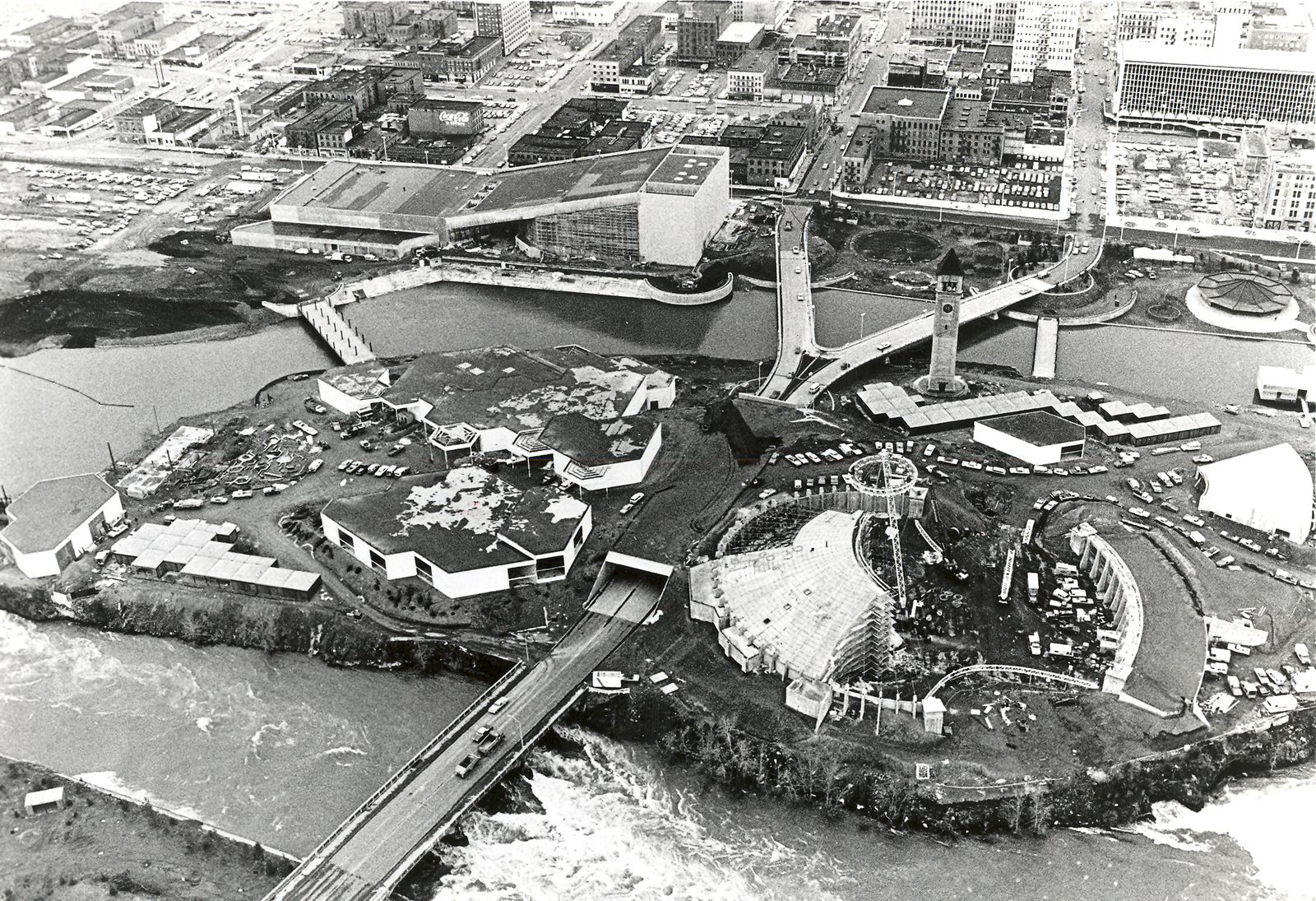
An aerial view of the Expo ‘74 World’s Fair site is shown when most of the outside construction was 95 percent complete.
Photo Archive The Spokesman-Review
Expo ‘74 Construction.
Photo Archive The Spokesman-Review
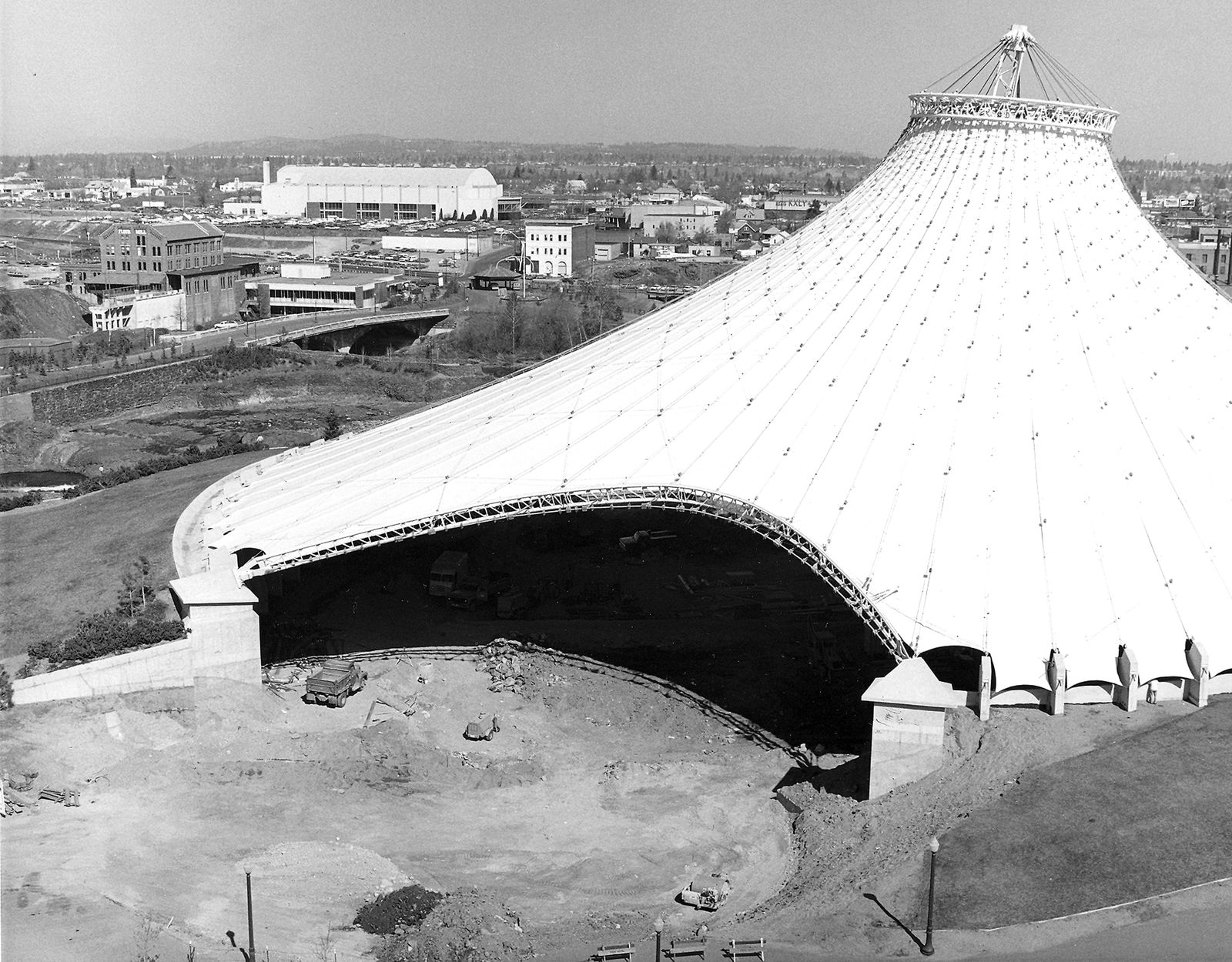
Construction was well underway on the U.S. Pavilion which became the landmark structure at Expo 74 in Spokane. The Flour Mill and Spokane Coliseum are in the background.
Photo Archive The Spokesman-Review
Expo ‘74 Construction.
Photo Archive The Spokesman-Review
Expo ‘74 Construction.
Photo Archive The Spokesman-Review
Share on Social Media